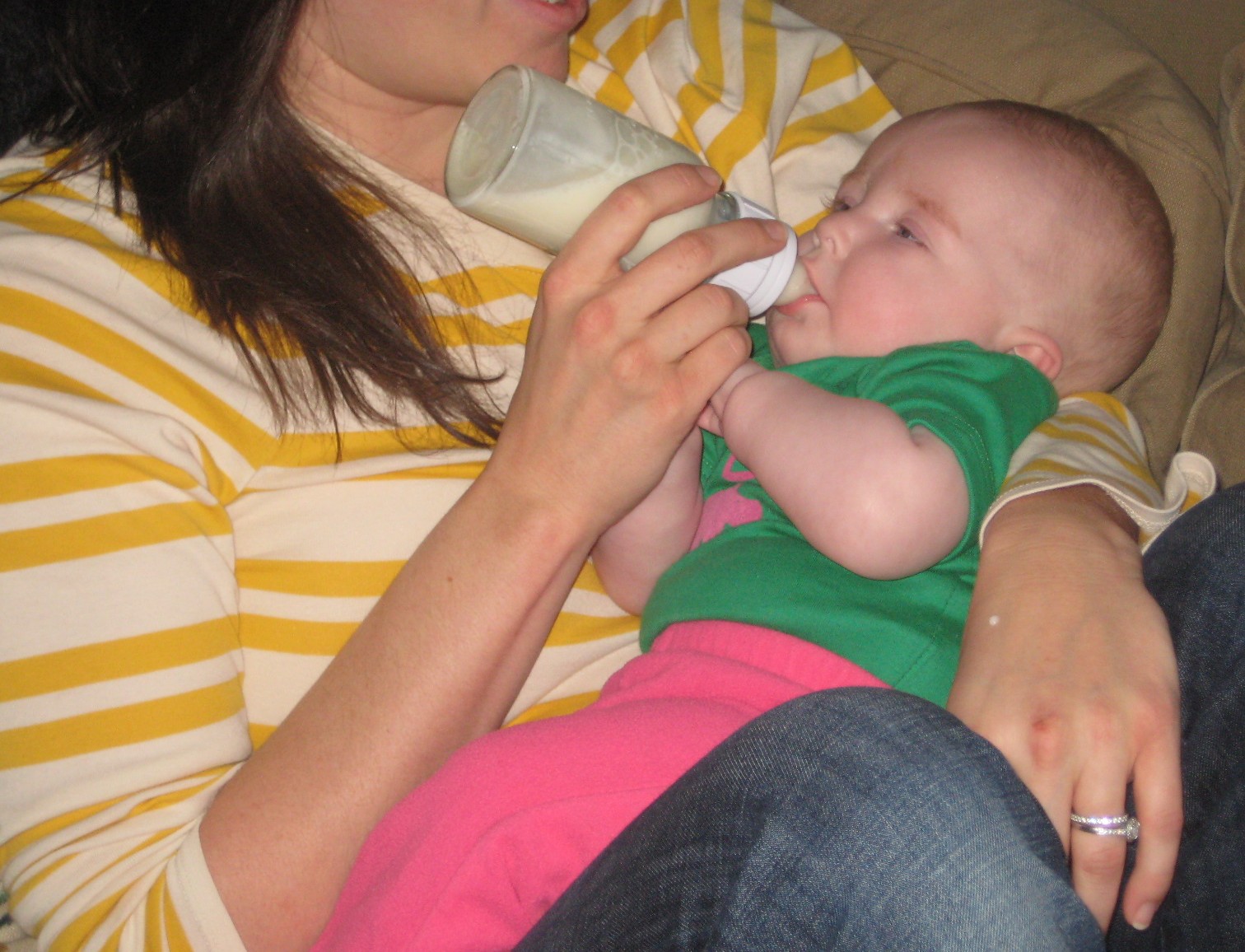
Feeding is a developmental milestone for babies in the Neonatal Intensive Care Unit (NICU) – both for those born prematurely, and for those born with medical problems. Even though we are saving babies who have more medical problems, or who are very premature, the average gestational age that babies are able to eat everything and go home continues to be around 36–37 weeks. Babies born with medical problems are often not able to eat everything until closer to their due dates (40 weeks).
Therapy has not been successful at getting these babies to eat sooner – but many therapists are using programs that stretch or move the mouth and face. They do this because they think that how the mouth moves (like sucking) will predict how the baby will eat. Studies that have used these movement therapies have only been trying to get babies to eat sooner, or to eat faster. We don’t know if touching the mouth and the face of babies might cause them to dislike things in/around their mouth after they go home. No one has looked at the long-term effects of these programs. Healthy babies who are born at term do not need these movement exercises to learn how to eat. Why would babies born early or with medical problems need them? The problem is, these programs don’t think about “eating”. They focus on sucking. Most babies who are in the NICU are learning how to suck, swallow and breathe.
 Some therapists, nurses and hospitals are starting to think about “infant-led feedings”. The difference between programs that are movement-focused compared to those infant-focused is that “infant-led feedings” consider the experience of eating. Babies are working hard to breathe, swallow, stay awake, and have energy to eat. These newer programs are trying to help them breathe more comfortably, swallow safely, and focus their energy on eating. These programs look at the baby’s breathing, heartrate and color to see if the feeding is going well. They also look at the baby’s arms and face, to see if they look like they are enjoying eating (eating with their hands up by their face) or if they are getting too tired (eating with their hands laying limply). Many babies keep their eyes closed when they eat – they are focusing on eating. Once the baby is eating without problems, they often open their eyes more and are able to look at their parent during the feeding. The feeder – parents and/or professional caregivers – are very important to the baby. Babies need our help to eat in the beginning. We can make the room quiet and calm, which can help the baby focus on eating. We can also wrap up the baby, or pick bottles that are slow enough that th
Some therapists, nurses and hospitals are starting to think about “infant-led feedings”. The difference between programs that are movement-focused compared to those infant-focused is that “infant-led feedings” consider the experience of eating. Babies are working hard to breathe, swallow, stay awake, and have energy to eat. These newer programs are trying to help them breathe more comfortably, swallow safely, and focus their energy on eating. These programs look at the baby’s breathing, heartrate and color to see if the feeding is going well. They also look at the baby’s arms and face, to see if they look like they are enjoying eating (eating with their hands up by their face) or if they are getting too tired (eating with their hands laying limply). Many babies keep their eyes closed when they eat – they are focusing on eating. Once the baby is eating without problems, they often open their eyes more and are able to look at their parent during the feeding. The feeder – parents and/or professional caregivers – are very important to the baby. Babies need our help to eat in the beginning. We can make the room quiet and calm, which can help the baby focus on eating. We can also wrap up the baby, or pick bottles that are slow enough that th e baby can comfortably suck, swallow and breathe. The feeder needs to be paying attention during the feeding, so that the small signs the baby may give that they need more help to eat comfortably can be seen. Breastfeeding is the best “infant-led feeding.” Many people still think breastfeeding is harder or takes more energy, but research shows this is not true. Research that has looked at feeding programs that are “infant-led” are promising, both in the NICU and after the baby goes home with their family.
e baby can comfortably suck, swallow and breathe. The feeder needs to be paying attention during the feeding, so that the small signs the baby may give that they need more help to eat comfortably can be seen. Breastfeeding is the best “infant-led feeding.” Many people still think breastfeeding is harder or takes more energy, but research shows this is not true. Research that has looked at feeding programs that are “infant-led” are promising, both in the NICU and after the baby goes home with their family.
Erin Sundseth Ross, PhD, CCC-SLP
Founder, Feeding Fundamentals, LLC
